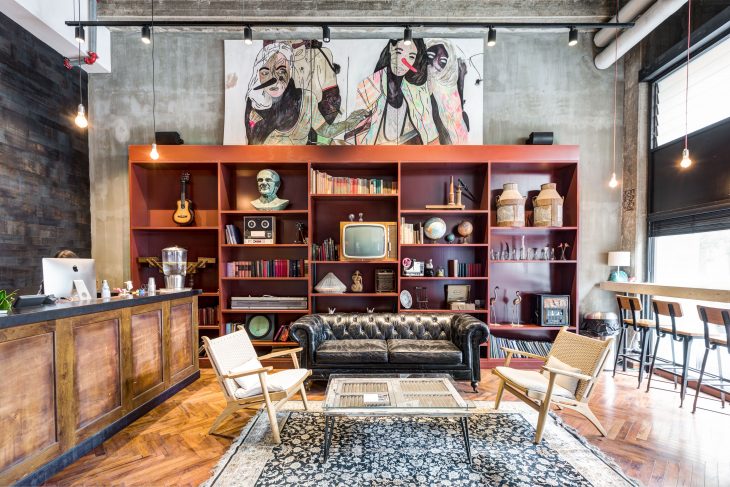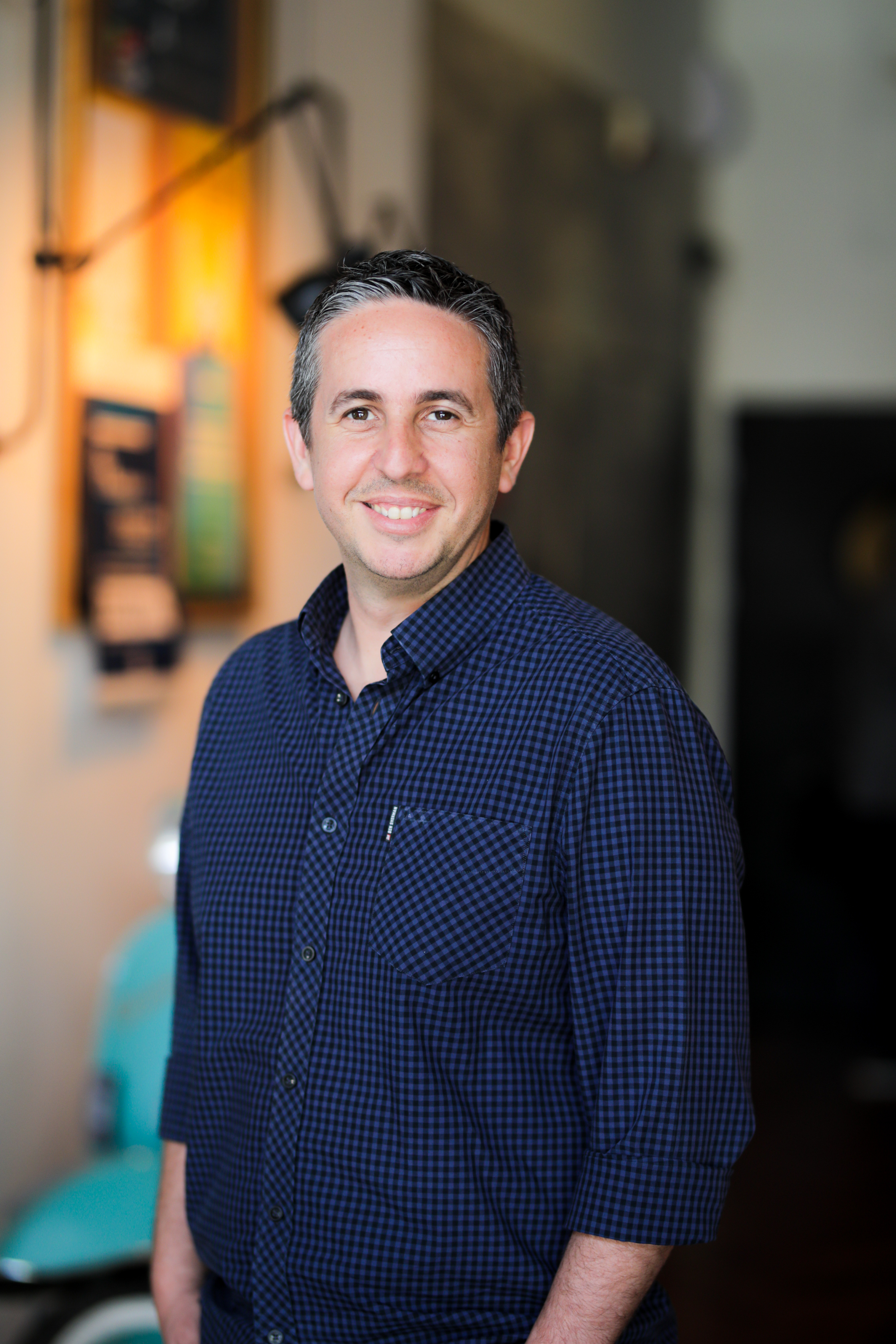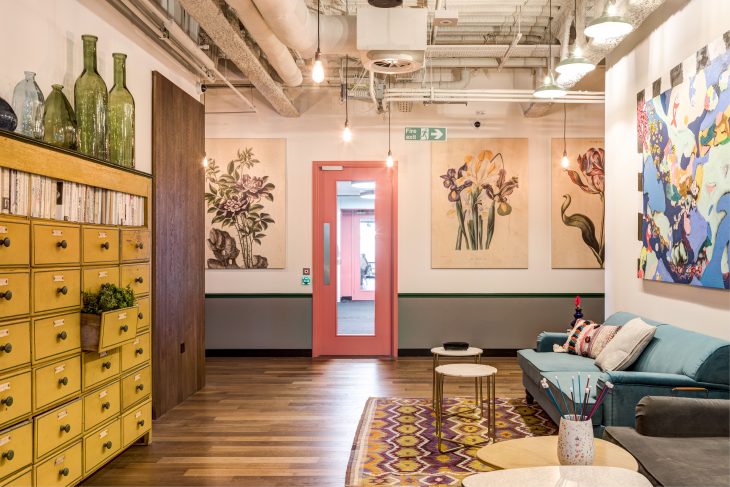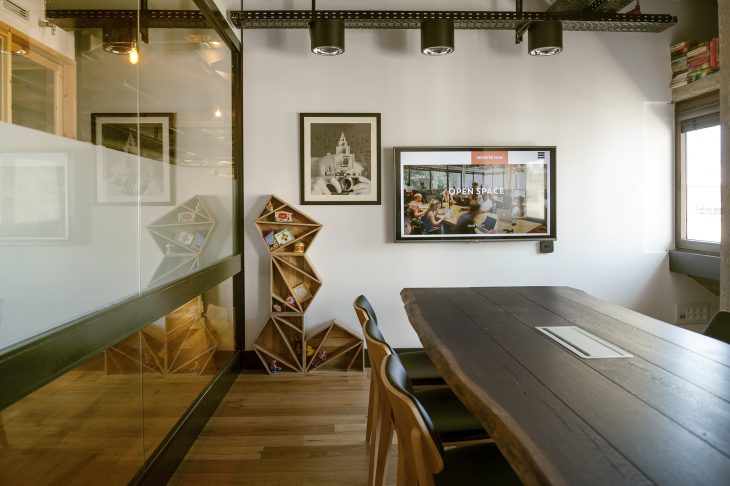Mindspace CEO Dan Zakai shares why their Tel Aviv HQ is a direct reflection of their coworking spaces around the world.
Bob: Can you give us some background about Mindspace?
Dan: Mindspace started about five years ago in Tel Aviv, Israel. We were the first company in Tel Aviv to deliver an upscale coworking space during the industry shift, where people were familiarizing themselves with the coworking concept and the growing need to have high levels of premium coworking space for companies of different sizes.
Over the years, we have grown to become a global boutique coworking provider. We are present in seven countries and 13 cities, but in every location that we identify and eventually choose to build in, we take a boutique approach on design and service for our members. Currently, Mindspace is a company operating in a high-growth environment – the coworking industry. Over the years, this became a meaningful industry. Here, at our HQ in Tel Aviv, we fundamentally build the infrastructure that allows us to scale globally. Here, we handle the sourcing, development, design, and software of our locations.
Bob: How many employees do you have? How big is your space?
Dan: We have close to 200 employees and close to 30 locations with about 1 million square feet in space. The average space of one of our coworking locations is 30,000-40,000 square feet.
Bob: You described the boutique approach that you take. What is unique about that and how do you differentiate yourselves?
Dan: Most global operators are not boutique but standard, so they can achieve scale, whereas we are the only global operator of boutique spaces.
To achieve that, we had to take a very professional approach to the creation of boutique spaces, so we can also scale globally. For example, we choose only prime locations and we’re very selective in what buildings we’re willing to take. For the most part, we only open in Class A buildings or buildings that are unique in the local tapestry. Each location is designed as a standalone site, so while there are recurring themes and design elements to make the brand consistent, the spaces are vastly different and always localized.
We established an Art & Design team that designs each of our locations, curates local and international art for the space, and also creates original art installations in every one of our spaces.
Our business is very much hospitality-oriented and, so our community team is set to support the boutique approach and is larger than the industry average (almost twice the number of community managers per members). It allows us to give more personalized service as well as plan and manage more activities for the community.
Lastly, behind the scenes we use our own technology to support the members with an app to book meeting rooms and connect with other members, a check-in app for guests and a dashboard for our brokers. We pay close attention to all the communication channels with members and try to make every touch as personalized and unique as possible.
Bob: Can you describe the demographics of your team and the culture of the organization?
Dan: The culture changes with time, but over the years, what we were able to accomplish is a highly entrepreneurial culture. We want to keep a vibrant and dynamic culture, so it’s usually a young, diversified team. It’s the same culture that we have here at our HQ.
Bob: How does your space reflect that culture? Are you doing anything with your space to attract new talent?
Dan: We started out of a coworking space in Tel Aviv, so we understand what it’s like to be a small company working out of a coworking space. With our industry now catering to larger companies, we decided about 18 months ago to move out of our coworking space and have a space of our own that was bigger and had more privacy.
We also wanted a flexible space that could grow with us.
If you walk into our space, the first thing we want people to think is: “This looks like Mindspace in Berlin” or “This looks like Mindspace in London.” We want our space to be a reflection of our coworking spaces around the world. It’s our business to create the best work environment for our customers, so we wanted to have the exact same feel for our Mindspace employees. Our space is open plan, including the top management. We have meeting rooms to hold private sessions and a large lounge with a kitchen/bar and break out areas. It reflects what we do all over the world.
Bob: When you went from a coworking space to your new, private space, what were some of the goals you were trying to achieve with that move?
Dan: The first thing was to achieve transparency and the feeling of ‘togetherness’. This is why we went for an open plan layout. We can share news with everyone and have lunch together. We wanted our employees to feel that we are all here for the same mission, visible to one another, and here to help each other. With many people joining the team quickly, we want to make sure that people always feel welcome and having an open plan truly allows for this.
Bob: Are your desks assigned or unassigned?
Dan: About 90 percent of the desks are assigned but we have some that are not assigned for visitors coming in for training or meetings at HQ.
Bob: Where are you getting the most value from your office space?
Dan: I think with retention. The underlying goal of the company is to recruit the best talent and keep retention high as time progresses. I think when you walk into our HQ, or any Mindspace location, you’re going to feel inspired by the design – the art, and the attention to detail that you’ll find in every corner of the office. It makes you feel great. I truly believe that this is what is allowing us to attract the best talent in the market. Another angle of what we do is help companies build culture, we bring in a lot of activity and content to those companies and members in the same way we do it for our employees. From a design perspective, it’s important that everyone feels warm, inspired and proud of the space that they are working in.
Bob: It sounds like you place a heavy emphasis on design. Is this where you are seeing the value?
Dan: Yes, definitely. Design is a huge aspect of what we do at Mindspace.
Bob: You touched on transparency earlier – is there a lot of collaboration occurring in your space? Tell us about how you innovate as a company.
Dan: In terms of collaboration when we assign space, the logical thing to do is to place departments together that collaborate frequently. This helps create a healthy dynamic of collaboration across departments.
In terms of innovation, we consider ourselves one of the pioneers of our industry that took coworking to the level that it’s at today. We used innovation for our business model to meet the demand of our members, and the software that we built to allow for a better member experience. We designed an application that allows for our members to communicate with each other, book meeting rooms, and know their benefits of being a member. There’s lots of innovation going on, and it all starts at our HQ.
Bob: How do you guys collaborate? Are you using any special tools?
Dan: We use various software to collaborate on a project level or a company level. For instance, one software we use is called Monday.com. It’s great for project organization and to keep people engaged and working together. Since we are a global organization with many siloed teams, we do have various practices that we run as a company to keep people engaged, combined with software to keep people efficient.
Bob: What do people experience when they walk into your space? Do they understand it’s a coworking company or its culture?
Dan: When people walk into the Mindspace HQ, the first reaction is a wow-effect or even jealousy! People feel that it’s the kind of space they would want to work in. I’ve heard people say that they think this is how people are supposed to be working or this is the future of work. Some offices feel cold and don’t provide the same sentiment that we do.
Bob: How do you measure your organization’s performance? Are there any metrics you have that are tied directly to your space?
Dan: We measure the utilization rate of our spaces around the world. We run at an occupancy level that is about 90 percent across our more mature spaces that have been open for at least a year. The average is over 90 percent which is extremely high for our industry. On average we have 60-70 square feet per person but it’s tricky to measure since our spaces vary.
Bob: How do you know if you need to change a space or make an adjustment to your space?
Dan: In every one of our locations, we have teams that monitor the behavior of our members in the space. We also have technology that help us map out the space. Truthfully, as a boutique company, we pay the most attention to what our members say and their feedback. If we monitor one space by conducting surveys, then we know what works and what doesn’t and make those changes as we go. We also look at market dynamics. When we have an understanding of a specific market, we know how it behaves. In some markets, there’s a demand for larger groups so we will build a larger space. If in another market we know that people will not be willing to be in an office that doesn’t have windows, we make sure they have them.
Bob: Is there anything that came out of your surveys that is unique?
Dan: Yes – phone booths are one example. We have learned overtime that phone booths are highly-used by our members. They don’t want to book a meeting room every time they need to make a phone call, they want to be able to just jump in a space when they want. We have learned over time the best ratio of phone booths to members for all locations. We also have data in regard to the utilization of our meeting rooms. If we see there is high usage, we see that we might need to build another meeting space. Based on our analysis, we were able to alter our planning for future locations to better meet the needs of our members.
Bob: Where are you most willing to spend money on your space? Where do you get the most return?
Dan: At the end of the day, since we are catering for Fortune 500 companies and companies that are willing to pay the premium, it means that we need to make sure we build high-quality spaces. We already have this standard across all of our spaces. We probably spend the most money on the communal spaces that everyone is using. Every location is dynamic and has its own potential. For example, one of our spaces in Germany is in a 120-year-old building and has a beautiful atrium that wasn’t necessary, but we felt like it did the space justice.
It creates the wow-effect. We have our budget and business plans set, but sometimes passion comes in pushes everything out and you just want to make something special out of a space.We are growing responsibly, but we are still passionate about what we are doing, and design is a big part of that. I think that’s what characterizes Mindspace.








